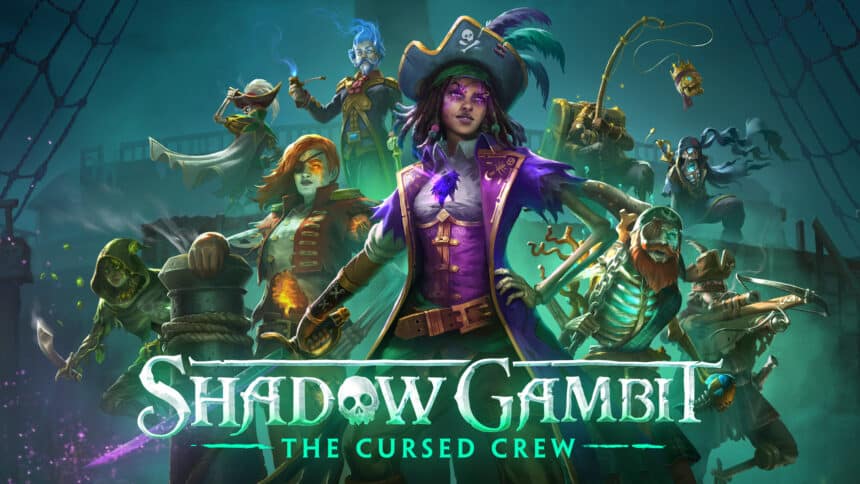With Shadow Gambit: The Cursed Crew, Mimimi Games have outdone themselves. If you just read one line of this extensive review, let it be that. Everything you loved about Shadow Tactics and Desperados III has been turned up to 11. What were already very accomplished and very well-received historical stealth games, have been clipped and sped up, redesigned and reworked, honed and perfected, enhanced and expanded.
Nothing has been lost, and yet the end result is nothing like the structure, tone, or playstyle of those previous titles. It’s better. Which is an incredible achievement when those games are so highly rated and are personally some of my absolute favourite stealth experiences of the last video game generation or so.
A radical overhaul comes with the territory really. What would you expect when you throw out realistic historical settings, and go full-on supernatural cursed pirates? With that choice comes a radical rethink of how these games function and how they play. Narrative and gameplay has to change to not only accommodate that, but enhance it. And the switch up? It’s nothing short of inspired! I think the closest they’ve ever came to supernatural before was the voodoo enemy control that Isabelle could do in Desperados III, but clearly it’s been simmering under the surface at the studio, waiting to be unleashed as they gave themselves free rein to just do whatever they wanted.
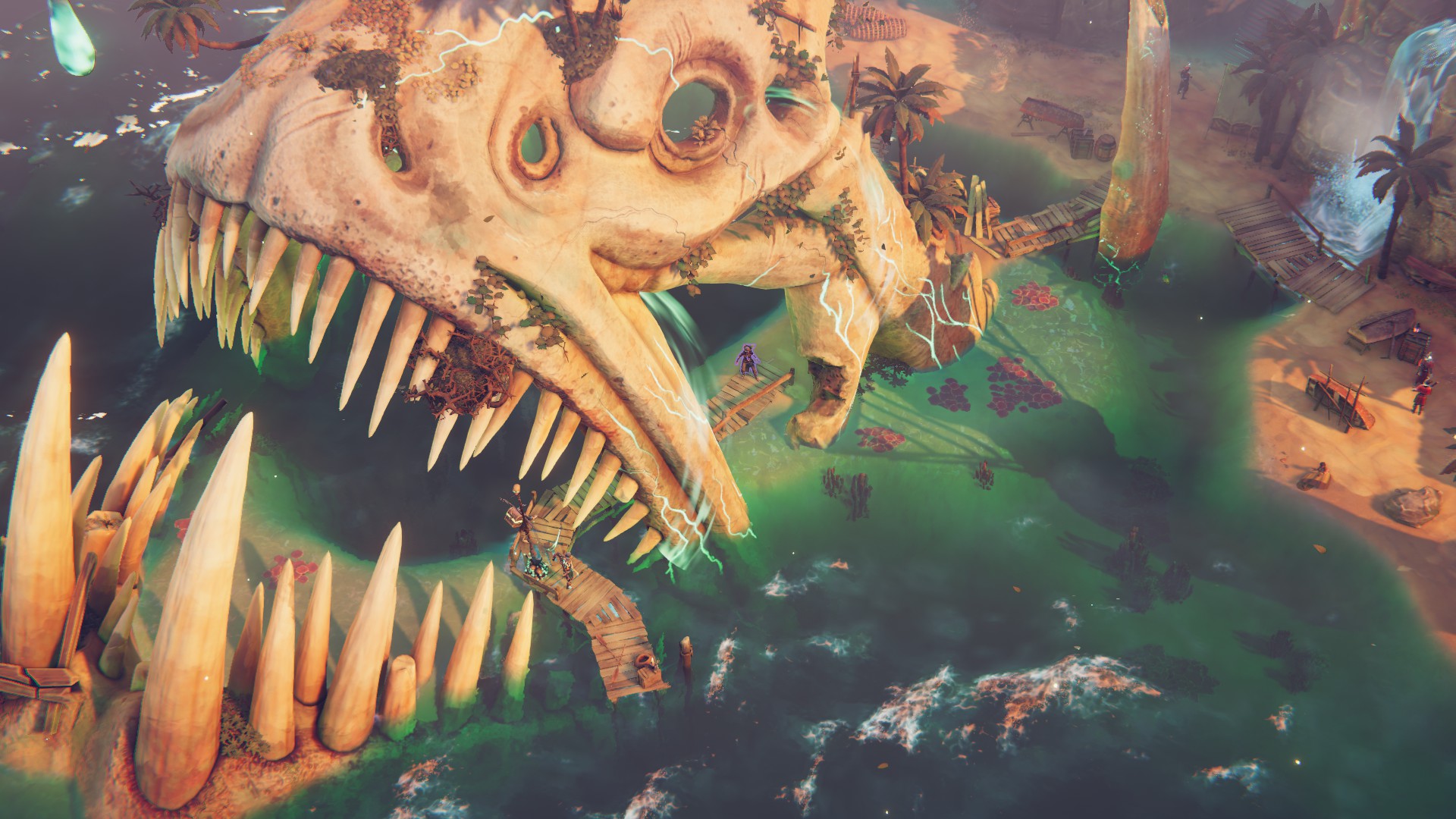
You play as the titular Cursed Crew of the Red Marley, a sentient ghost ship that can magically rewind time via a memory snapshot and give you a second chance. The Prince of Persia will tell you, that’s very useful in a videogame. The Red Marley is the essential main member of the crew, giving you the bulk of your missions in a kind of miniature Hitman female-voiceover style, and driving the story forward. The ship acts as the new hub between islands and missions, full of crew management and practice scenarios, backstory for each crew and tons of other stuff besides.
You start off with just Afia Manicato, a young black pirate with a sword through her chest that allows her to teleport-kill. The Inquisition, a cult-like authority of religious zealots led by a tyrant called Ignacia, has captured the Red Marley. Like 18th Century nazis, they have their fingers in every magical item, tome and cursed rite going. Afia frees the Red Marley, and they team up to solve the late Captain Mordecai’s riddle and find his treasure, before the Inquisition can get their dirty hands on it. Clearly there’s more to Afia that will come clear in time – she seems to have history with the Marley that the Marley doesn’t remember.
I’ll try to steer clear of any spoilers that go beyond the first act, but the early missions concern themselves with recovering the ship’s old crew, reanimating their lifeless bodies with a few cursed items. No one seems to stay dead in the realm of undead pirates. The crew is the life and soul of Shadow Gambit, eight larger-than-death individuals with a plethora of fantastical supernatural abilities to aid in their stealthy endeavours.
There’s so much to love here; the blinded ex-Inquisition sniper who uses her soul as a bullet; the half decomposed John Mercury with one foot in the Below and one in the physical world, and his dead pet fish; Toya the samurai and ship’s cook, on the trail of cursed ingredients and training a fish of his own to become a ninja; Pinkus the posh aristocrat turned pirate who would rather possess the inner babblings of guard’s minds than get his hands dirty, and many more besides. They say dead men tell no tales, but the joy of Shadow Gambit is in discovering the origins and backstories of your crew and then helping them with their own dedicated missions and tales in the present.
Act one may concern itself with the crew and trying to bag Mordecai’s treasure, but that’s just the beginning of the tale. Even once you think you’ve opened it, the treasure is far more complicated, requiring plenty more to actually get to it, or even discover what it is. Ignacia is always a few steps ahead of you too. Look forward to a few fantastic twists that involve gameplay elements deployed in formidable style. It’s just fantastically done, and yet another demonstration of Mimimi’s incredible narrative chops.
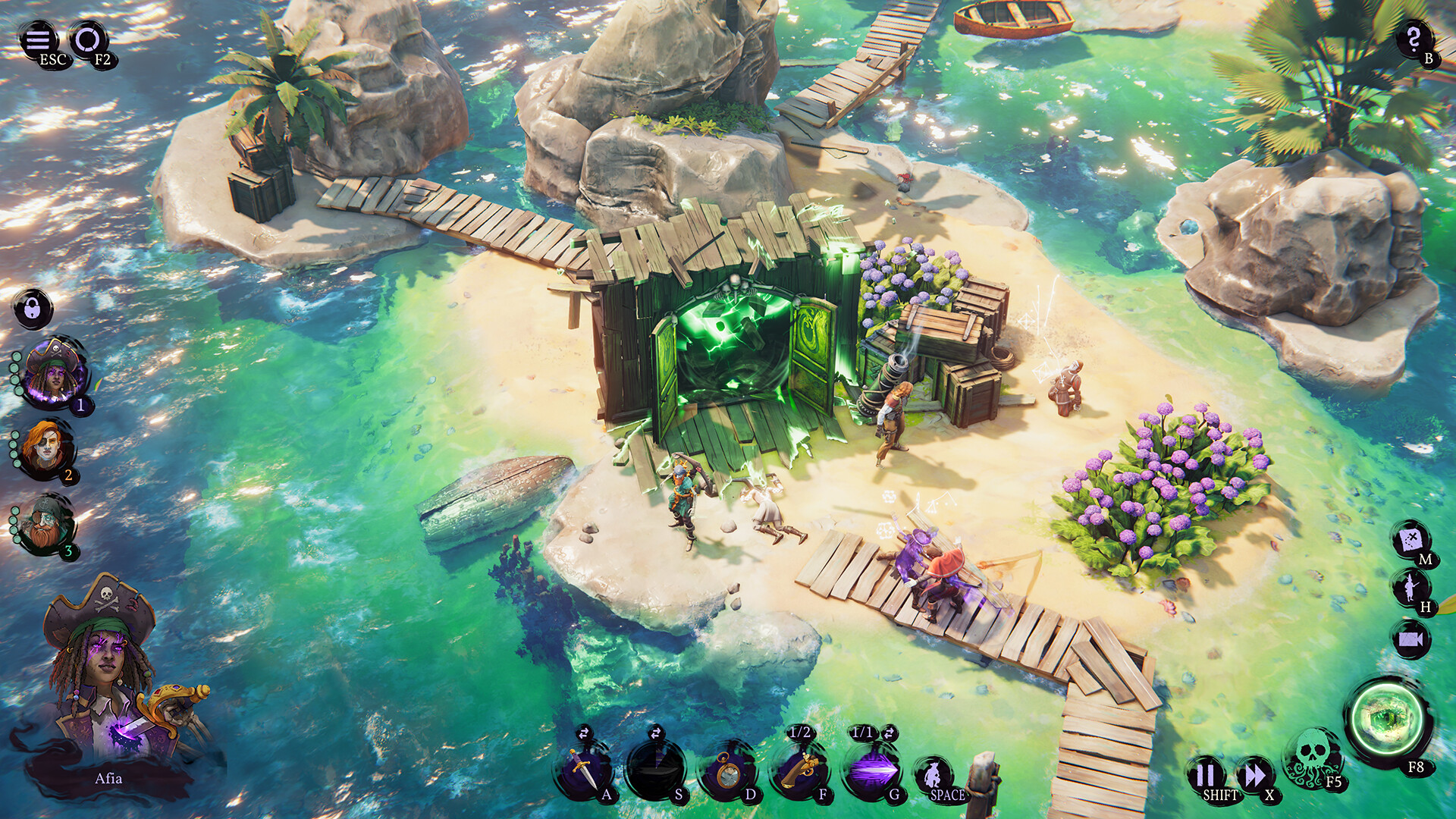
So the mainstay of Shadow Tactics and Desperados III is that quick-save, and that’s the case here too. The Red Marley can hold your memories, making saving your game a part of the story – the literal memory magic of your ship. It’s also been made faster and more responsive than ever before. And it’s not a quick save and a normal save, it’s one save function that is just instant. I can’t think of many games where the act of actually saving your progress is worked into the powers of a character in the story, so it feels pretty unique in that regard.
This speed in saving and retrying isn’t the only place things are faster. The flow of the gameplay feels faster and smoother here than in the past. Where in Shadow Tactics and Desperados III you could often wait long periods for the perfect moment, and redo it multiple times, and loading took its time, Shadow Gambit quickens the flow, with faster ways to change character, move and react. You can make the most of smaller, slimmer opportunities, often just on the fly or via happy accidents. You can reload and retry in about 3 seconds, so there’s barely any impediment to experimentation. Indeed, so quick is the reload I often just tried things a few different ways to see which I liked best. It means you can be more off the cuff, and the punishment for getting things wrong is absolutely minimal. Just remember to press the save button.
You get access to some five or so islands close to the start, and then a couple more as you progress. And within those tranches you can tackle islands in any order, just up to the point of the next large story beat. In many cases these islands are huge and represent the size and complexity of any of Mimimi’s previous large levels in earlier games. Each island has its own distinct personality; there’s a prison island where the trapped souls of dead infidels (who knows if they’re really guilty of anything) are tortured in never-ending agony; there’s the regenerating island made up of a monstrous dead fish whose flesh keeps coming back; there’s the island haunted by the playful but terrifying souls of two dead children; or there’s the lighthouse island suspended in a never-ending curse that wrecks any ship that approaches.
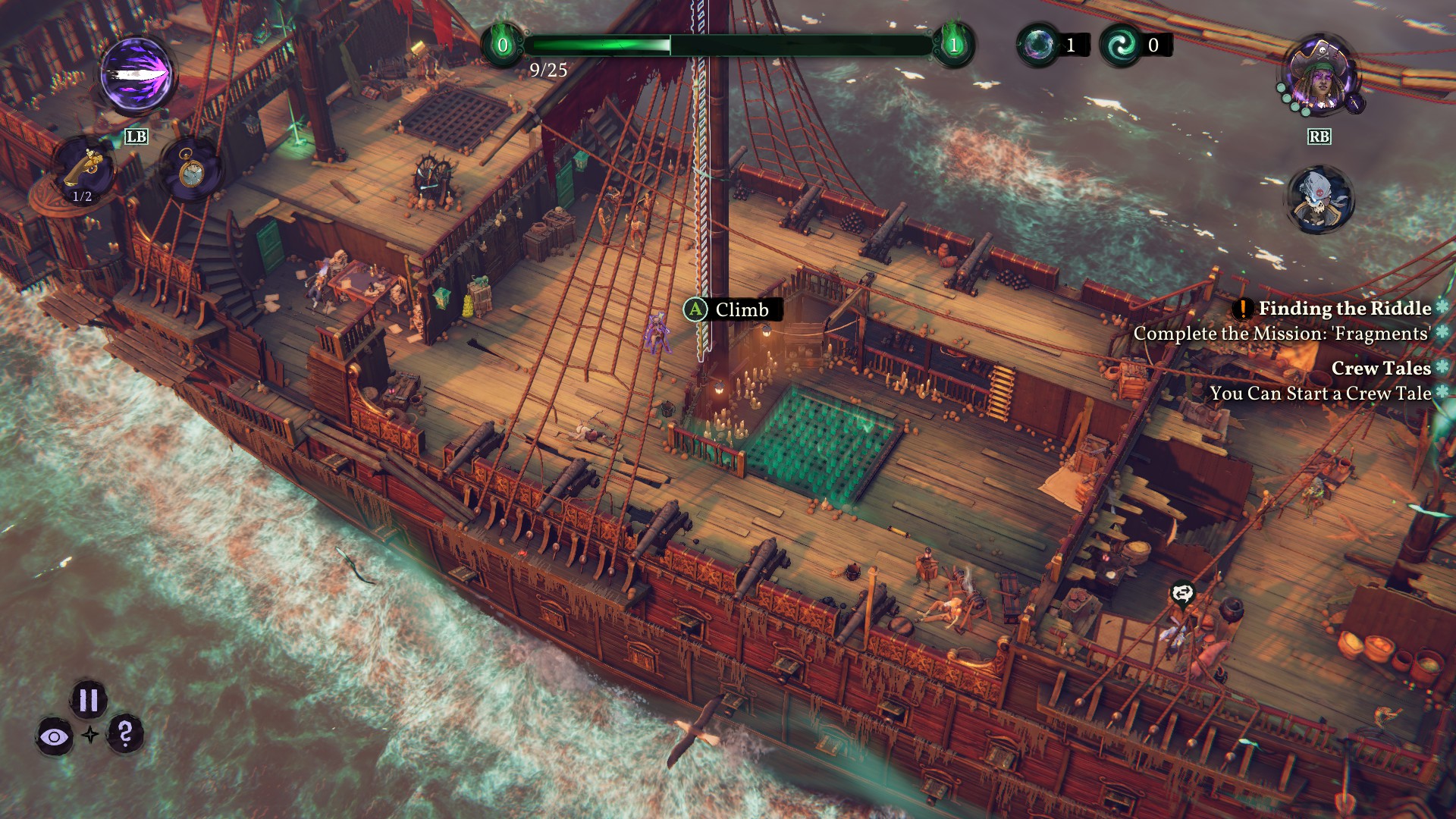
Each of these island levels can have multiple entry points and multiple separate missions to complete on them. To say there’s been some inspiration from the recent freeform Hitman World of Assassination games is an understatement, but it’s a really good inspiration. One small shame is it doesn’t seem to be possible to do two missions at once on an island that otherwise has two or more available missions. You instead have to do one, find an extraction portal, and then start the second mission on that island on its own. It becomes less about doing everything at once, or clearing every guard from a whole level as it often felt good to do in previous games, and more about choosing the closest landing point and sticking to objectives. But like the quick save and the controls, this speeds everything up.
The structural changes from Shadow Tactics and Desperados III are deep and affect everything from the level design on down. Having a hub and mission structure and islands that you want players to revisit means having landing and extraction mechanics and far quicker, more opportunity-based skills. Levels are like compartmentalised onions – landing areas and early objectives might be easy to reach, but the compound right next door demands skills and approaches best suited to a larger group or skills you don’t yet have. Further in, the islands main or late objectives require taking your team almost all the way from one side to the other and utilizing all your skills. It also means swapping up that intense single-player narrative, for something pick up and play, almost handheld in style, targeting only 3 pirates per level instead of the regular 5, yet still managing to slowly deliver a story that works with that level of freedom.
And what about those supernatural pirate skills – surely the biggest draw in a stealth-based game. All the abilities you’d expect from Mimimi’s previous games are there, only they’re now bonkers. Teleport-kills never get old and give you more speed and range than normal; distracting a guard with an undead fish or your bouncing severed head; shooting one enemy body to land on another; submerging into the ground and assassinating your targets from Below; growing your own hiddy-bushes for cover as you approach; clearing up bodies with a fishing rod and a magical treasure chest; using bodies to teleport up bases and over obstacles; blind-sniping with your own soul; progressing by possessing one guard after another all the way behind enemy lines – they’re bonkers and they’re awesome.
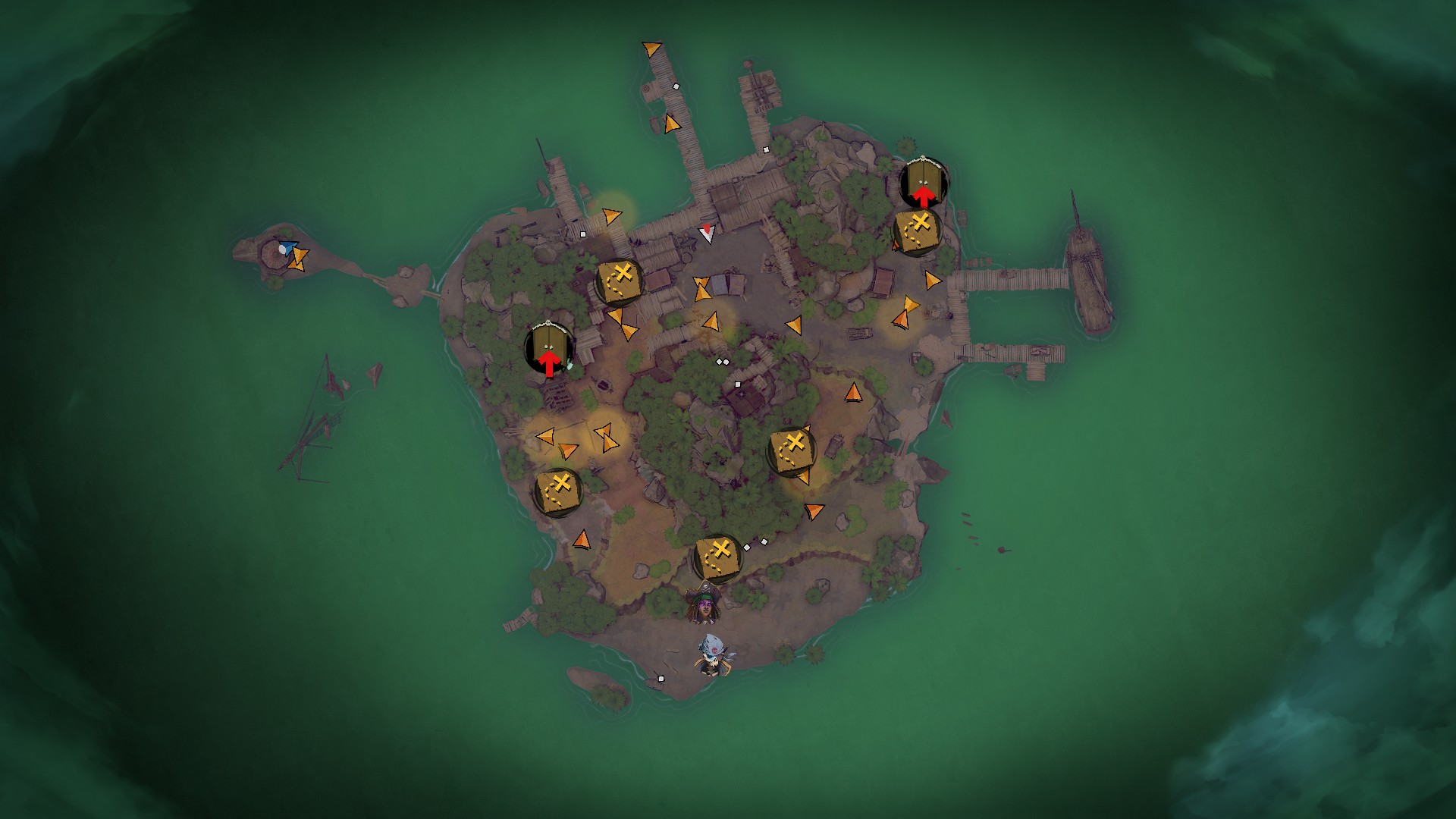
Long-time fans will recognise repurposed abilities from previous games, but there’s such an enormous amount of new stuff it can’t fail to satisfy. If I had a tiny gripe, it’s that I had grown used to mainstay abilities like Mugen/Hector’s group-area kill or Kate/Aiko’s long-term disguise distractions. These are missing, but it really doesn’t matter, and I’m kind of glad they are. Those abilities are rooted in the setting or the physical reality of those games. Cursed dead pirates have their own, often far more inventive abilities. Shadow Gambit is all the fresher for leaving them behind.
You gain upgrade currency or Vigor by doing missions, and you can spend it on a single one-off enhancement to one ability per pirate. You can also gain Vigor more quickly by taking different crewmembers on missions because they accumulate Vigor while they wait and you earn it when they are used. But don’t fret that you can’t always use your favourite team – almost every cursed pirate on the crew is brilliant, and many are one-man wrecking crews. Any combination is likely able to succeed, and it’s a joy to discover ways to use their powers in interesting ways that you may not experiment with if you got into a pattern with one team.
For instance, I began by using John Mercury’s Below trick just to kill off guards stealthily, but after being forced into a tight spot with only him to rely on, I realised just how versatile his powers were. You could drop underground and pop up without killing, just making your way from hiding spot to hiding spot, bush to bush, and get almost anywhere on the map. Needless to say, he became a firm favourite, but this is the case with almost any of them.
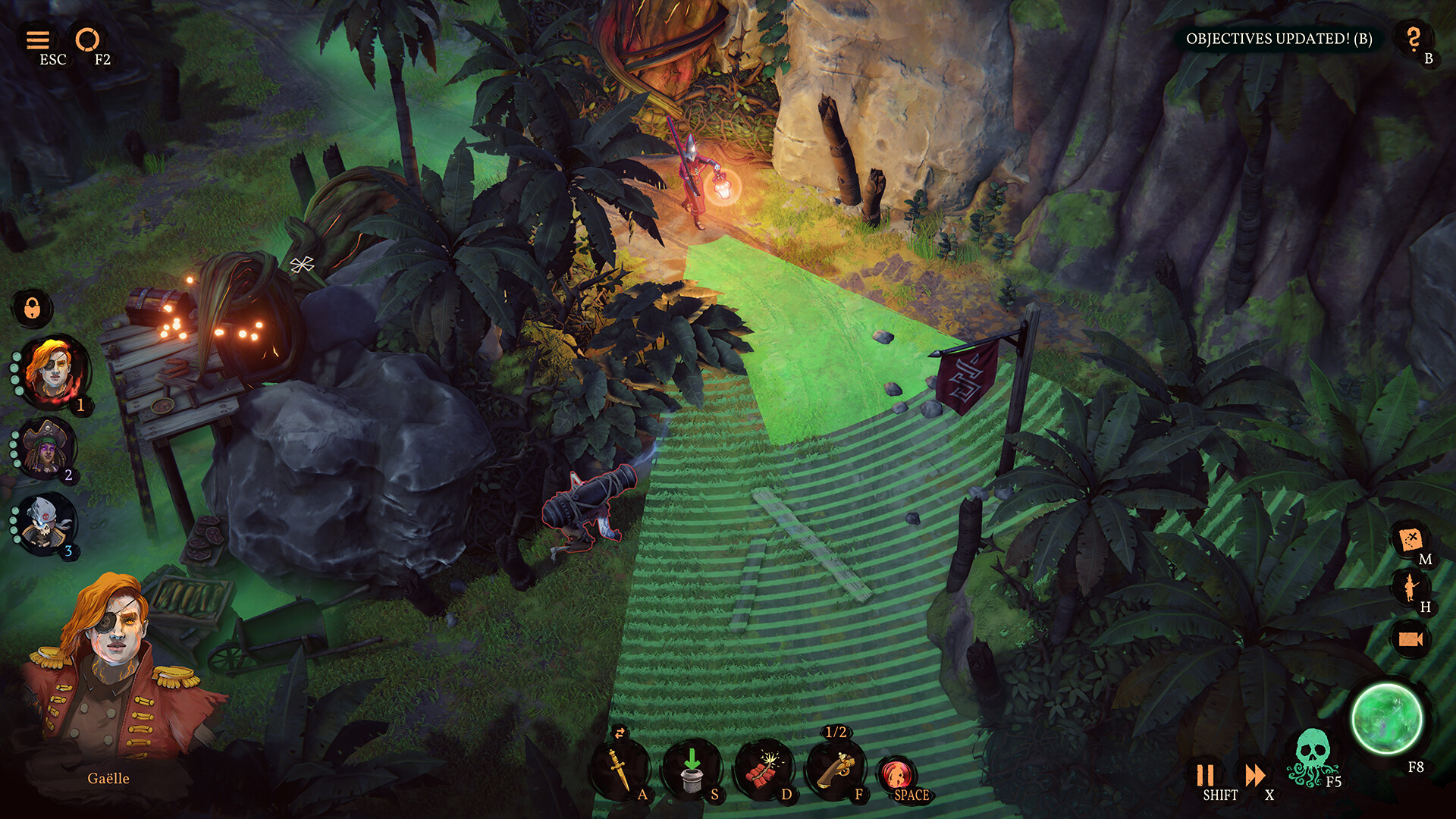
The voice acting and voice cast are superb. Each pirate gives a fantastic and unique performance, and Afia in particular is quotable and her accent will stick with you next time you’re thinking about pirates. The little themes that accompanied mission set-up and leaving the Marley, have become as ingrained on me as the menu refrains of Shadow Tactics. Of course this time around everything is flavoured with pirate instruments, sea-dog-type themes, and shanty town ditties.
Graphically, Shadow Gambit is again a massive step up in pixels and polygons. As a game that you are generally going to view from a top-down and god-mode style camera, the graphics are beautiful, intricate and exceptionally colourful. I can’t think of a stealth game this colourful, that takes as its palette the beautiful tropical blues, yellows and greens, and then smashes them together with ethereal murky greens when you are in cursed lands, or deep in the below and the bowels of the Marley. As is to be expected, zoom in to the fullest extent and the polygon count will feel low, but it’s one of those games where the graphics are already at the pinnacle of what this genre asks for, and its not trying to pursue some hyper-realism.
When I got chance to preview Shadow Gambit, I remarked that the camera control and the sheer number of controls for camera, character movement, zooming and such were all so similar I would need a lot of practice not to accidentally get them mixed up. That’s a concern of a preview. With the full game now complete, I can tell you I got my hands and brain around the controller layout and camera controls within just a few hours and this concern fell away to the point I only remembered to mention it while reading back through my previous experience. If anything, I’m now glad of the increased amount of control that they have managed to map on to controllers – when manipulated just right it can make you feel incredibly instinctive with your stealthing.
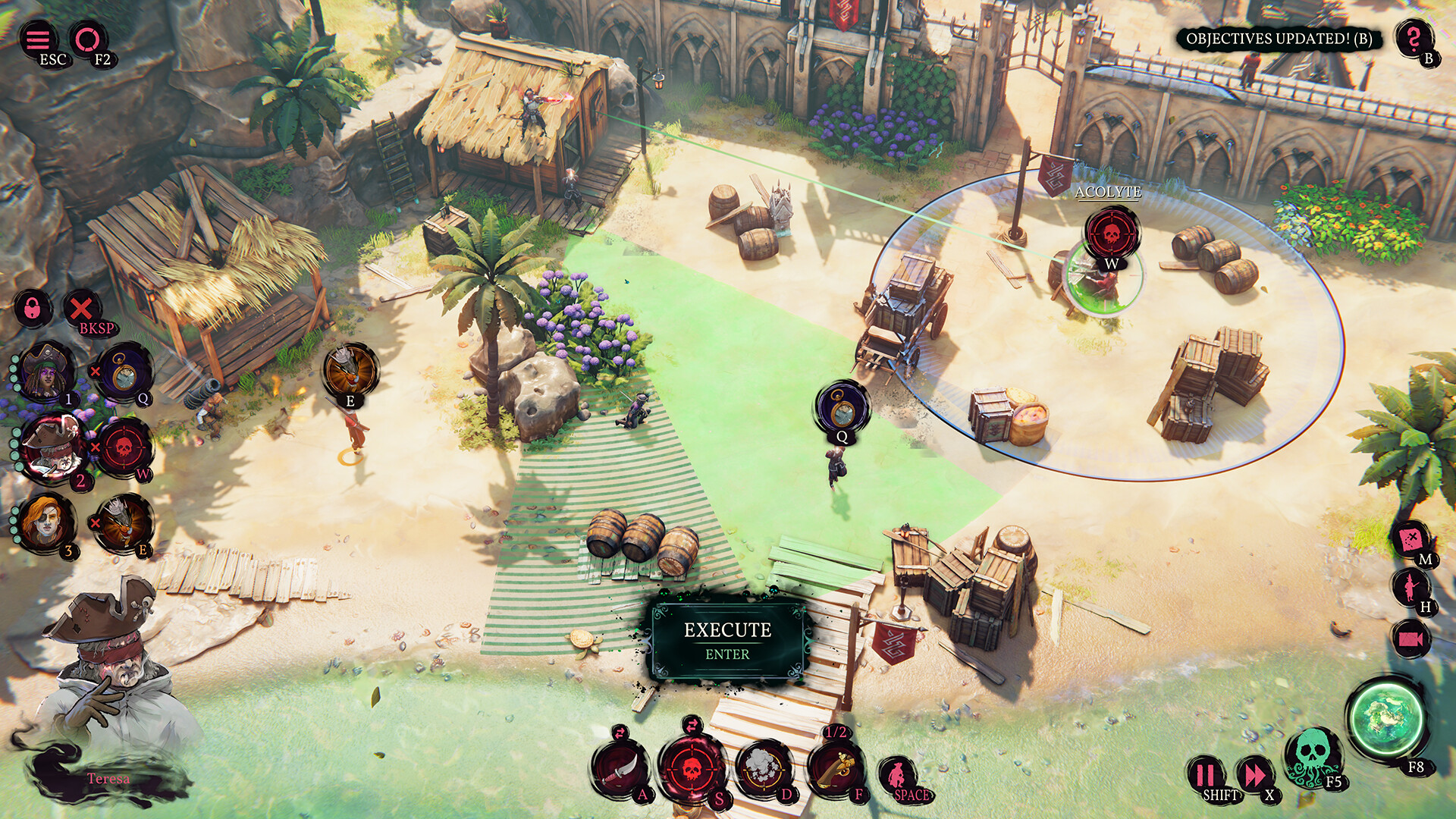
Shadow Gambit The Cursed Crew is Mimimi Games off the leash. With the safety off. Hook, line and sinker. New IP, revised controls, any order mission structure, supernatural stealth powers and quicker gameplay. There’s a joyful no-holds-barred feel to it, of just developers doing what they want to an incredible standard and without constrictive oversight. Mimimi Games have outdone themselves.
Shadow Gambit The Cursed Crew has swept in like a tide, washed Shadow Tactics and Desperados III down into second and third place and established itself as the best IP and the best game they’ve made to date. I’m not mincing words to say this is possibly the most fun I’ve had with a stealth title since The Phantom Pain, and in my mind, I now look forward to the hopefully ongoing ‘Shadow’ series with as much excitement as a new entry to Metal Gear or Splinter Cell. Cursed? Blessed, more like.
Shadow Gambit The Cursed Crew has managed to bring cursed pirates and the stealth genre together in such harmony, you’ll wonder why it’s not been done before. Bringing the game’s actual save mechanics into the centre of an adventurous tale of high-seas plundering and magical stealth abilities is an inspiration. Incredibly fun, relentlessly replayable, bursting with options, freedom, abilities and quality.

Shadow Gambit: The Cursed Crew is available now on PC (review platform) via Steam, PlayStation 5 and Xbox Series X|S.
Developer: Mimimi Games
Publisher: Mimimi Games
Disclaimer: In order to complete this review, we were provided with a promotional code from the publisher. For our full review policy, please go here. If you enjoyed this article or any more of our content, please consider our Patreon.
Make sure to follow Finger Guns on our social channels. Twitter, Facebook, Twitch, Spotify or Apple Podcasts – to keep up to date on our news, reviews and features.
